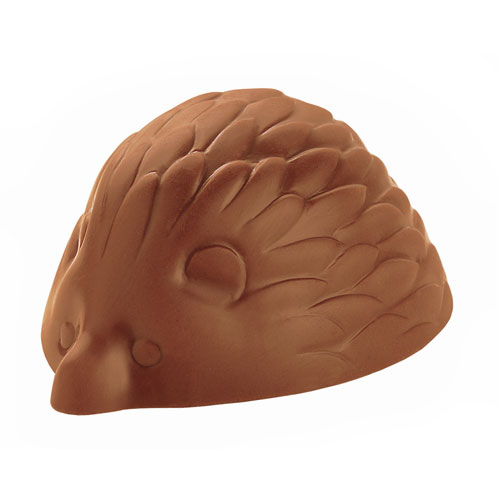An 8-year-old Wisconsin girl is heading to New York City next week to compete for a $25,000 college scholarship in a national peanut butter competition for her sandwich shaped like a hedgehog.
 Jif peanut butter announced Tuesday that Alexandra Miller’s sandwich created in the image of a hedgehog received enough votes in an online competition last month to earn her one of five finalist spots in the Jif Most Creative Peanut Butter Sandwich Contest (the Jif website totally sucks and I can’t find the picture; it’s also quite sexist; here’s a hedgehog, right).
Jif peanut butter announced Tuesday that Alexandra Miller’s sandwich created in the image of a hedgehog received enough votes in an online competition last month to earn her one of five finalist spots in the Jif Most Creative Peanut Butter Sandwich Contest (the Jif website totally sucks and I can’t find the picture; it’s also quite sexist; here’s a hedgehog, right).
The recipe, dubbed The Happy Hedgehog, places 1 tablespoon of Jif Creamy Peanut Butter and 1 teaspoon of Smucker’s sugar-free red raspberry preserve between two slices of whole wheat bread. It’s cut into a circle, with the edges pressed together to seal it. Ten pretzel sticks form the hedgehog quills, and almond slivers create ears with raisins for eyes and a Bugle chip for a nose. The hedgehog is complete with raspberry fruit strip feet, and green apple slices with peanut butter piped on top for grass.
Will the gimmick help sales?
Americans bought 41.8 million pounds of jarred peanut butter in the four-week period ending Feb. 21 – 13.3 percent less than in the same period the previous year, research firm Nielsen reported Tuesday.
The period’s sales were the lowest of any in the three years Nielsen has tracked the U.S. food, drug, and mass merchandisers segment, which includes Wal-Mart Stores Inc., the nation’s largest retailer.
Executives said last month that they were seeing weakness in Jif sales because of the outbreak, even though Jif was not affected. The company ran ads in more than 100 papers and aired national consumers saying the Jif brand is safe.
But that safety data is not publicly available. The best food producers, processors, retailers and restaurants should go above and beyond minimal government and auditor standards and sell food safety solutions directly to the public. The best organizations will use their own people to demand ingredients from the best suppliers; use a mixture of encouragement and enforcement to foster a food safety culture; and use technology to be transparent — whether it’s live webcams in the facility or real-time test results on the website — to help restore the shattered trust with the buying public.
